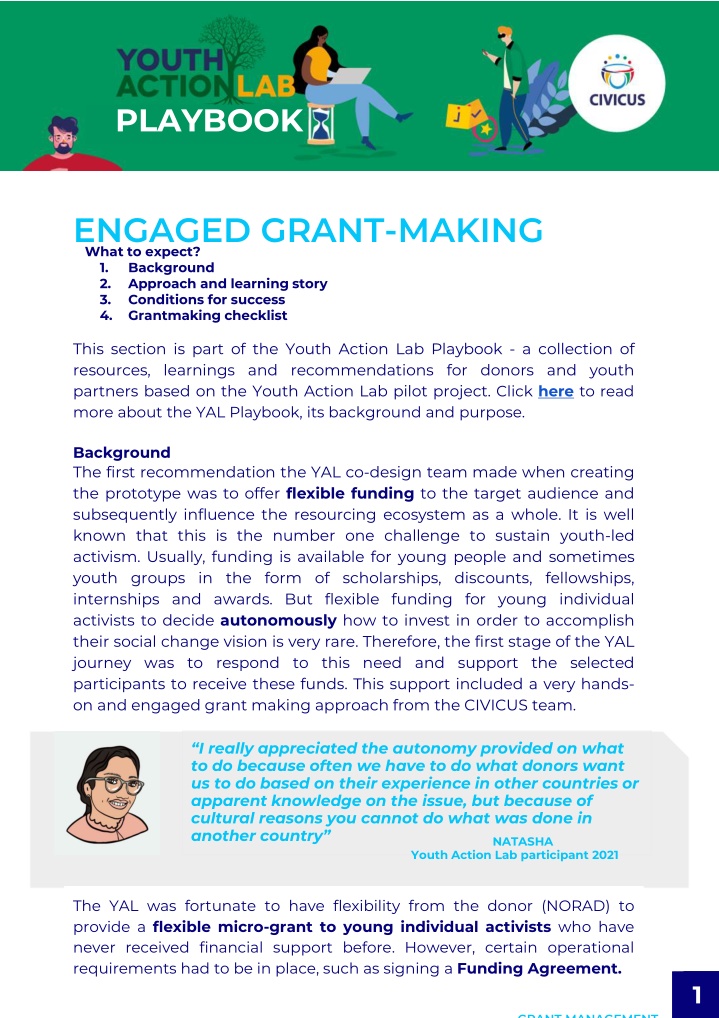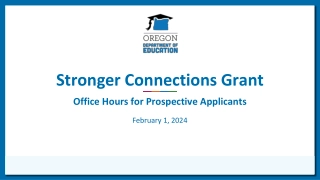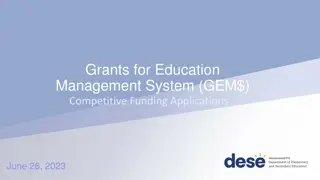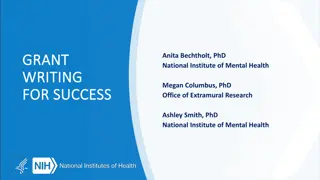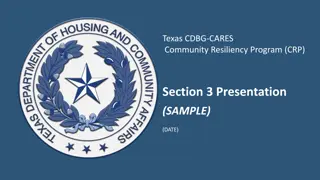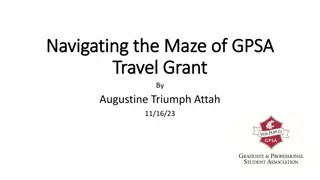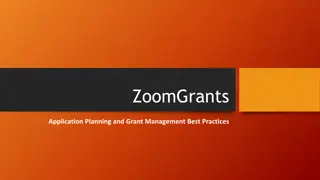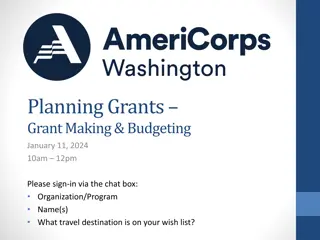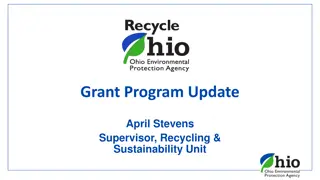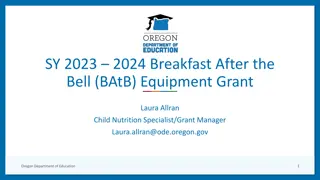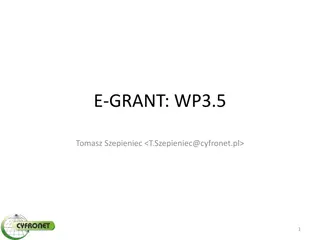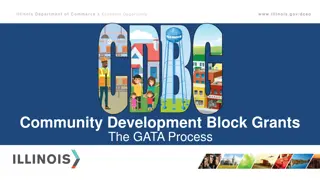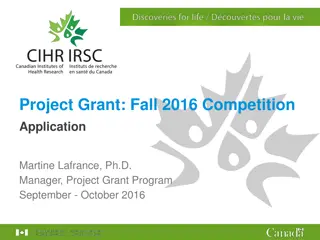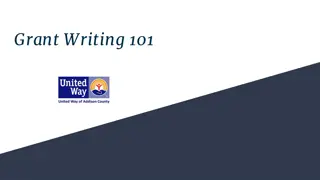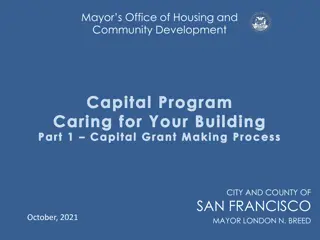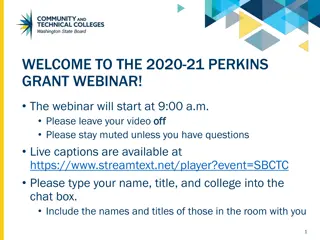Enhancing Grant-Making Process
Discover the approach taken by the Youth Action Lab in simplifying funding agreements to support young activists. Learn about the steps involved and key reflections from the grant-making experience.
Download Presentation

Please find below an Image/Link to download the presentation.
The content on the website is provided AS IS for your information and personal use only. It may not be sold, licensed, or shared on other websites without obtaining consent from the author.If you encounter any issues during the download, it is possible that the publisher has removed the file from their server.
You are allowed to download the files provided on this website for personal or commercial use, subject to the condition that they are used lawfully. All files are the property of their respective owners.
The content on the website is provided AS IS for your information and personal use only. It may not be sold, licensed, or shared on other websites without obtaining consent from the author.
E N D
Presentation Transcript
PLAYBOOK ENGAGED GRANT-MAKING What to expect? 1. Background 2. Approach and learning story 3. Conditions for success 4. Grantmaking checklist This section is part of the Youth Action Lab Playbook - a collection of resources, learnings and recommendations for donors and youth partners based on the Youth Action Lab pilot project. Click here to read more about the YAL Playbook, its background and purpose. Background The first recommendation the YAL co-design team made when creating the prototype was to offer flexible funding to the target audience and subsequently influence the resourcing ecosystem as a whole. It is well known that this is the number one challenge to sustain youth-led activism. Usually, funding is available for young people and sometimes youth groups in the form of scholarships, discounts, fellowships, internships and awards. But flexible funding for young individual activists to decide autonomously how to invest in order to accomplish their social change vision is very rare. Therefore, the first stage of the YAL journey was to respond to this need and support the selected participants to receive these funds. This support included a very hands- on and engaged grant making approach from the CIVICUS team. I really appreciated the autonomy provided on what to do because often we have to do what donors want us to do based on their experience in other countries or apparent knowledge on the issue, but because of cultural reasons you cannot do what was done in another country Youth Action Lab participant 2021 NATASHA The YAL was fortunate to have flexibility from the donor (NORAD) to provide a flexible micro-grant to young individual activists who have never received financial support before. However, certain operational requirements had to be in place, such as signing a Funding Agreement. 1 GRANT MANAGEMENT
Below is a summary of the YAL experience signing Funding Agreements with the Youth Action Lab participants in a step-by-step format. This is followed by a set of reflections on how the team learned and adapted in the second iteration of the YAL, and a series of recommendations about elements that remained unresolved or are important to highlight. APPROACH The YAL co-design team shared that first-time grantees, especially young people, feel a great deal of anxiety when signing funding agreements due to the responsibility that this entails. This resulted in signed funding agreements in the first iteration of the YAL being received six months after the programme started. Therefore, the CIVICUS youth project team attempted to ease the stress and burden by breaking down this process into five steps: Creating a simplified version of traditional contracts CIVICUS provides when granting funds. The Youth Action Lab Funding Agreement template had 6 pages instead of the 20 pages of a traditional agreement. 1 2 Translating the Funding Agreement into the languages YAL participants were comfortable with. 3 Offering a 90-minute group call to walk participants through each clause of the agreement. 4 Sending the Funding Agreement template via email with enough time before the orientation group call. 1. 5 The CIVICUS Youth team held one-on-one calls with each participant to fill out the contract together if necessary, and answering specific questions or concerns they did not ask in the group call. 2 GRANT MANAGEMENT
I found the funding agreement process amazing. I am amazed that CIVICUS still wanted to make the process better. I am now using it to develop my own organisational processes. I appreciated that the contract was detailed about purchase requirements. Copying the Youth Action Lab funding agreement and CIVICUS purchase requirements has helped with our donors to show we have an operations system. ANNA Youth Action Lab participant 2021 LEARNINGSTORY How we received 8/11 populated Funding Agreements within the first week of the Youth Action Lab MORE TALKING = LESS WORK & MORE EFFICIENCY The YAL has kicked off its bi-weekly check-ins where the CIVICUS coordination team has a one-on-one check-in with each Lab participant to learn how we can better support them and guide them through the offerings of the Youth Action Lab. This year (2021), the Funding Agreement was sent out to the participants a few days before their first one-on-one check-in. This gave the participants a few days to take in the information and come to the check-in with any initial questions they had. During our first check-in, we Agreements (translated into English, Spanish and French) with each participant and followed this up with a 'recap' email which they could refer to after our discussion. went through the Funding 3 GRANT MANAGEMENT
LEARNINGSTORY The check-ins created space for the participants to ask any questions or express any concerns about their USD5,000 micro-grant. We also shared our screen with them and took them through a 'mock' agreement, so they could see how the agreements should be completed. At first glance, it may seem that this method would be more time-consuming, however, it cut the turnaround mitigated mistakes. For instance, agreements were simply emailed to the participants with an outline of instructions, some of the agreements were only returned to us six months later. time in significantly 2020, and the when In 2021, every participant sent us their populated agreement in the correct format with the correct information. Moreover, as a result of the check-in, we received 8 out of 11 filled-in Funding Agreements within the first week of the Youth Action Lab journey and all of them within two months - four months sooner than the previous year! 4 GRANT MANAGEMENT
CONDITIONS FOR SUCCESS Structural Flexibility Dedication and simplification Aware of the limitations for youth- led groups to register and open bank accounts, the Youth Action Lab pushed CIVICUS to test signing funding agreements with individuals instead of registered organisations. YAL participants were able to receive financial support with fewer administrative constraints and CIVICUS embedded a new type of funding agreement that facilitated the processes when partnering with informal groups and individual activists. Thanks to the small size of the YAL cohort (10 activists in 2020 and 11 in 2021), the CIVICUS team was able to dedicate one full hour with each participant to discuss the Funding Agreement in detail, translate it into the languages they felt most comfortable with and negotiate with the CIVICUS operations team to offer a much more simplified version of the contract. Transparency, clarity, caring and consistency Learnings from the alumni network One-on-one coaching carried out with care through the administrative requirements enabled successful and meaningful funding relationships where it was possible to trust young individual activists and non-registered groups with unrestricted and flexible funds. Another reason for this success was that the 2021 cohort had access to the Funding Agreements of the 2020 cohort (without sensitive information). These helped to facilitate the process of understanding what was required from them to complete the Funding Agreement and have an understanding of the type, length and depth of detail needed. 5 GRANT MANAGEMENT
CHECKLIST Draft a checklist of factors to better understand the participants familiarity with agreements and contract complexity so that you can allocate appropriate staff time for each participant. ShiftThePower, not ShiftTheBurden. Have dedicated grant managers available to provide support for building and strengthening relationships with participants as well as completing administrative tasks. Simplify legal and operational documents and processes, including offering documents in different languages, summarised formats and templates. Engage in learning-based conversations with donors about how their requirements impact young grantees and increase the burden on grant managers and organisations. Ask participants if they are at risk by receiving funding through personal bank accounts. Consider alternative grant payment channels such as anonymous channels, Paypal, or allies' bank accounts to ensure safety and support of at- risk participants. I appreciated the quick response times from the CIVICUS team when answering questions and resolving issues. I experienced a high level of support and care. - Youth Action Lab participant Further recommendations from the CIVICUS sub-granting experiences in this summary on How accountable are CIVICUS resourcing practices. 6 GRANT MANAGEMENT
DO YOU WANT TO KNOW ABOUT OTHER PRACTICES? The Playbook is to be read and applied according to your context and can be adapted to suit your needs. Each practice is independent of the other so the order you want to choose to explore is always the right one. Click on one of the circles below to learn more about each practice. 7 GRANT MANAGEMENT
